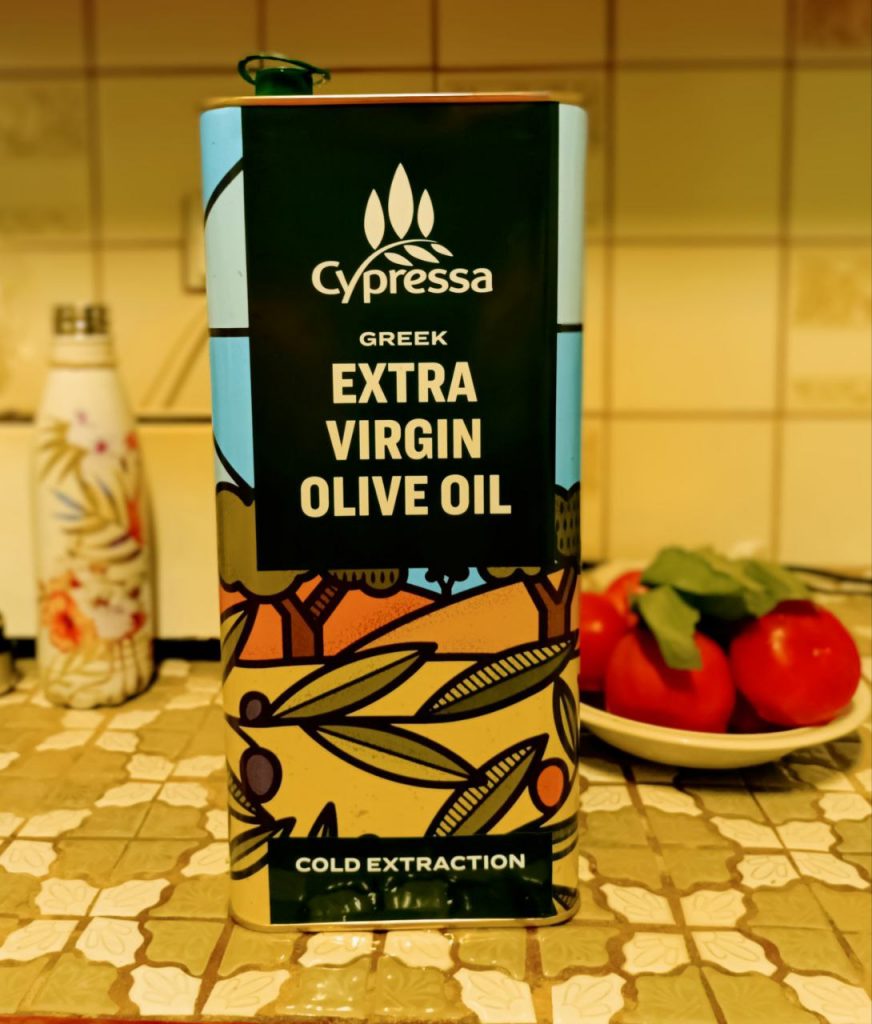Recently, I had a great lunch with friends at a well-known pizzeria in West London. The pizza was excellent, the atmosphere lively, and the ingredients seemed fresh and of high quality.
But just before tucking in, I asked for some olive oil to drizzle over my pizza – and that’s when my heart sank. The label on the bottle read Pomace Olive Oil.
For those unfamiliar, pomace olive oil is worlds apart from virgin olive oil, let alone extra virgin olive oil (EVOO).
- Extra virgin olive oil (EVOO) is simply the juice of olives, cold-pressed without heat or chemicals.
- Pomace olive oil, on the other hand, is extracted from the leftover pulp of already-pressed olives. Because very little oil remains in the pomace, solvents like hexane – a petroleum byproduct – are used to extract the remnants. This oil is then refined and mixed with a small amount of virgin olive oil to give it some flavour.
Why Is This a Problem?
- Chemical Residue – Although refining reduces solvent traces, small amounts can remain. Prolonged exposure to such residues has been linked to liver and kidney issues.
- Toxic Compounds – When overheated, pomace olive oil can generate harmful polycyclic aromatic hydrocarbons (PAHs), compounds associated with cancer risk.
- Low Nutritional Value – The refining process strips away antioxidants and nutrients, leaving a product with minimal health benefits.
But this isn’t just about health—it’s about flavour and respect for quality. Olive oil is added as a condiment because of its unique taste. Often, additional spices like chili, garlic, or truffle are infused to enhance the experience.
If flavour is the whole point, why use such a low-quality product as pomace oil? And more importantly, why would any respectable restaurant that prides itself on fresh ingredients, a welcoming atmosphere, and trained staff fall for something so substandard? It’s like fitting a Ferrari with budget tyres or wearing plastic shoes with a designer wedding dress. It cheapens the entire experience.
A Reflection of Quality
Some say the state of a restaurant’s toilets reflects the hygiene of its kitchen. Similarly, serving pomace olive oil reflects how much a restaurant values quality—and by extension, how much it respects its guests.
Of course, there’s a wide range of quality even within EVOO. I don’t expect every restaurant to use the highest-end oil, but I do expect it to use a product that is legally classified as EVOO, with a flavour profile recognizable as extra virgin olive oil.
For example, the oil in the picture is an extra virgin olive oil from Cypressa Foods. It’s not the best I’ve ever tried, but I’ve purchased it several times when my usual supply of organic, farmer-produced EVOO from Italy runs out. It’s a decent oil, reasonably priced, and produced in Greece. This is the kind of oil I would expect a restaurant to use when preparing a fresh salad or offering olive oil as a condiment. (Note: I have no connection to Cypressa Foods and no financial interest in promoting their products.)

Opportunity for restaurants
Restaurants could use this as an opportunity to educate their guests about quality olive oil. Highlighting the origin and type of oil they serve could become part of their branding and customer experience. Imagine a menu proudly stating something like: “We use only premium extra virgin olive oil from Greece/Italy/Spain to complement our dishes.”
If a restaurant invests in high-quality ingredients, good olive oil should be non-negotiable. Let’s leave pomace where it belongs—in industrial kitchens, not on dining tables.
Pingback: How to Choose a Good Extra Virgin Olive Oil - Scientialex